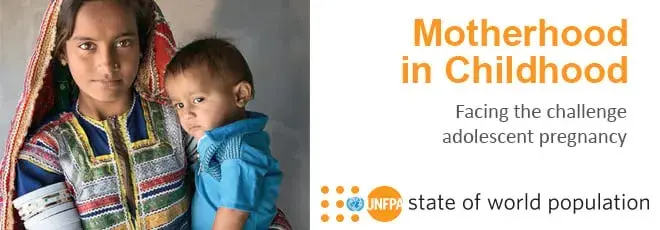Each year some 7 million girls below age 18 give birth worldwide; more than half are in Asia. Nine in 10 of these births occur within marriage or a union. This has consequences on the heath, education, employment and rights of an untold millions of girls.
In South Asia, 22 per cent of girls give birth before age 18. Throughout the region, adolescent pregnancies are most common among the poor, the rural and those without education.
Births among adolescents are highest where child marriage is most prevalent, and child marriages are generally more frequent where poverty is extreme. Half of the child brides in the developing world live in Asia, excluding China. In South Asia, two out of five girls are child brides.
While most adolescent mothers are married, pregnancy and unsafe abortion among unmarried adolescents are also serious concerns, including in South-East Asian and Pacific Island countries.
The report shows that girls who remain in school longer are less likely to become pregnant. Education prepares girls for future jobs and livelihoods, raises their self-esteem and their status, and gives them more say in decisions affecting their lives. Education also reduces the likelihood of child marriage and delays childbearing, eventually leading to healthier birth outcomes.
The report applies a multilevel ecological framework, which shows that adolescent pregnancies do not occur in a vacuum. They are the consequence of a combination of factors, including poverty, communities’ and families’ acceptance of child marriage, and inadequate efforts to keep girls in school.
The State of World Population 2013 calls for a shift away from interventions targeted at girls towards broad-based approaches that build girls’ human capital, help them make decisions about their lives, including matters of sexual and reproductive health, and offer them real opportunities so that motherhood is not seen as their only destiny.
This new approach must target the circumstances, conditions, norms, values and structural forces that perpetuate adolescent pregnancies on the one hand and that isolate and marginalize pregnant girls on the other.
Girls need to have access to both sexual and reproductive health services and to information. They need to be released from the economic and social pressures that too often translate into a pregnancy, as well as the poverty, poor health and unrealized human potential that come with it.


